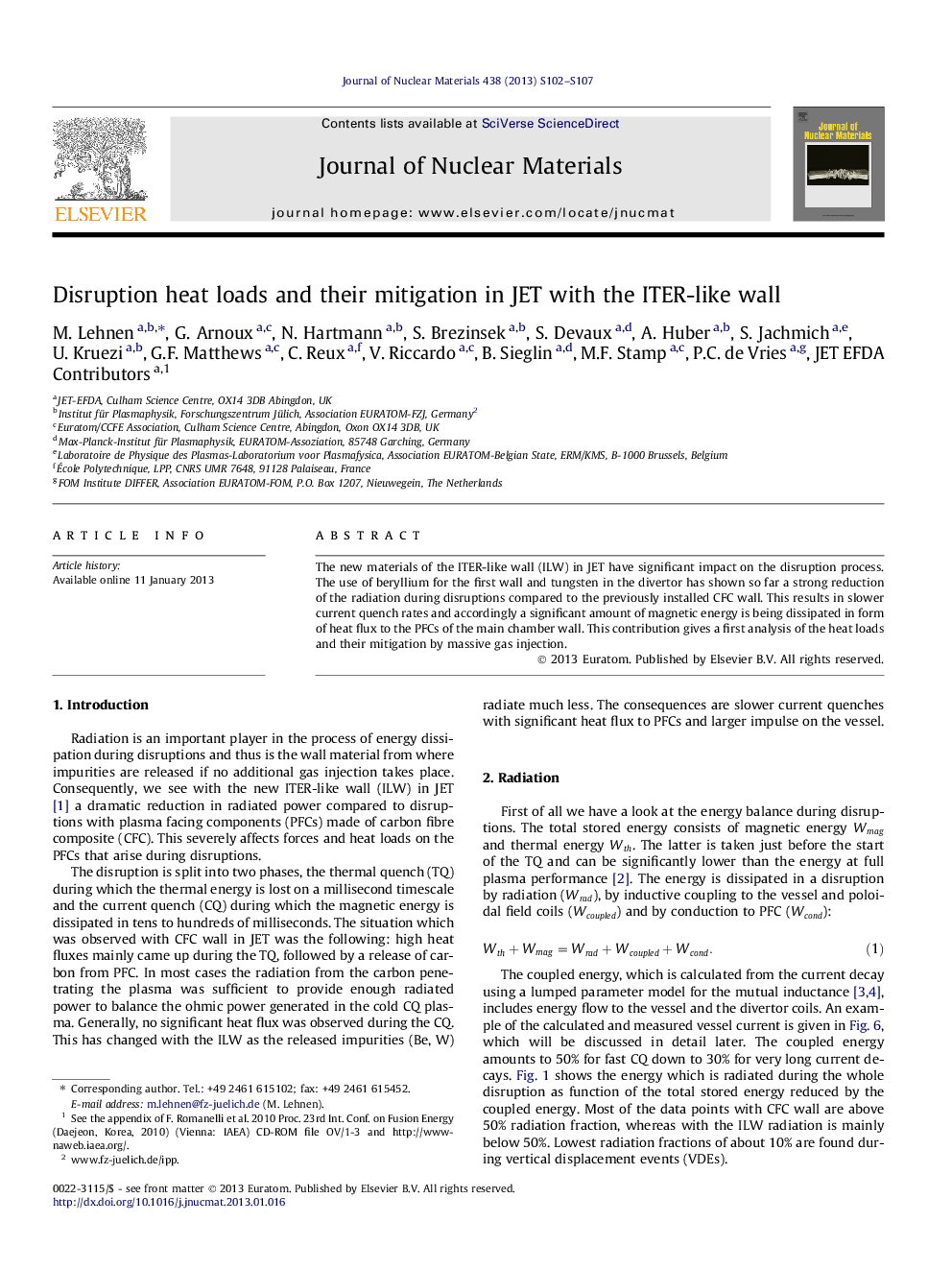| Article ID | Journal | Published Year | Pages | File Type |
|---|---|---|---|---|
| 10644957 | Journal of Nuclear Materials | 2013 | 6 Pages |
Abstract
The new materials of the ITER-like wall (ILW) in JET have significant impact on the disruption process. The use of beryllium for the first wall and tungsten in the divertor has shown so far a strong reduction of the radiation during disruptions compared to the previously installed CFC wall. This results in slower current quench rates and accordingly a significant amount of magnetic energy is being dissipated in form of heat flux to the PFCs of the main chamber wall. This contribution gives a first analysis of the heat loads and their mitigation by massive gas injection.
Related Topics
Physical Sciences and Engineering
Energy
Nuclear Energy and Engineering
Authors
M. Lehnen, G. Arnoux, N. Hartmann, S. Brezinsek, S. Devaux, A. Huber, S. Jachmich, U. Kruezi, G.F. Matthews, C. Reux, V. Riccardo, B. Sieglin, M.F. Stamp, P.C. de Vries, JET EFDA Contributors JET EFDA Contributors,
